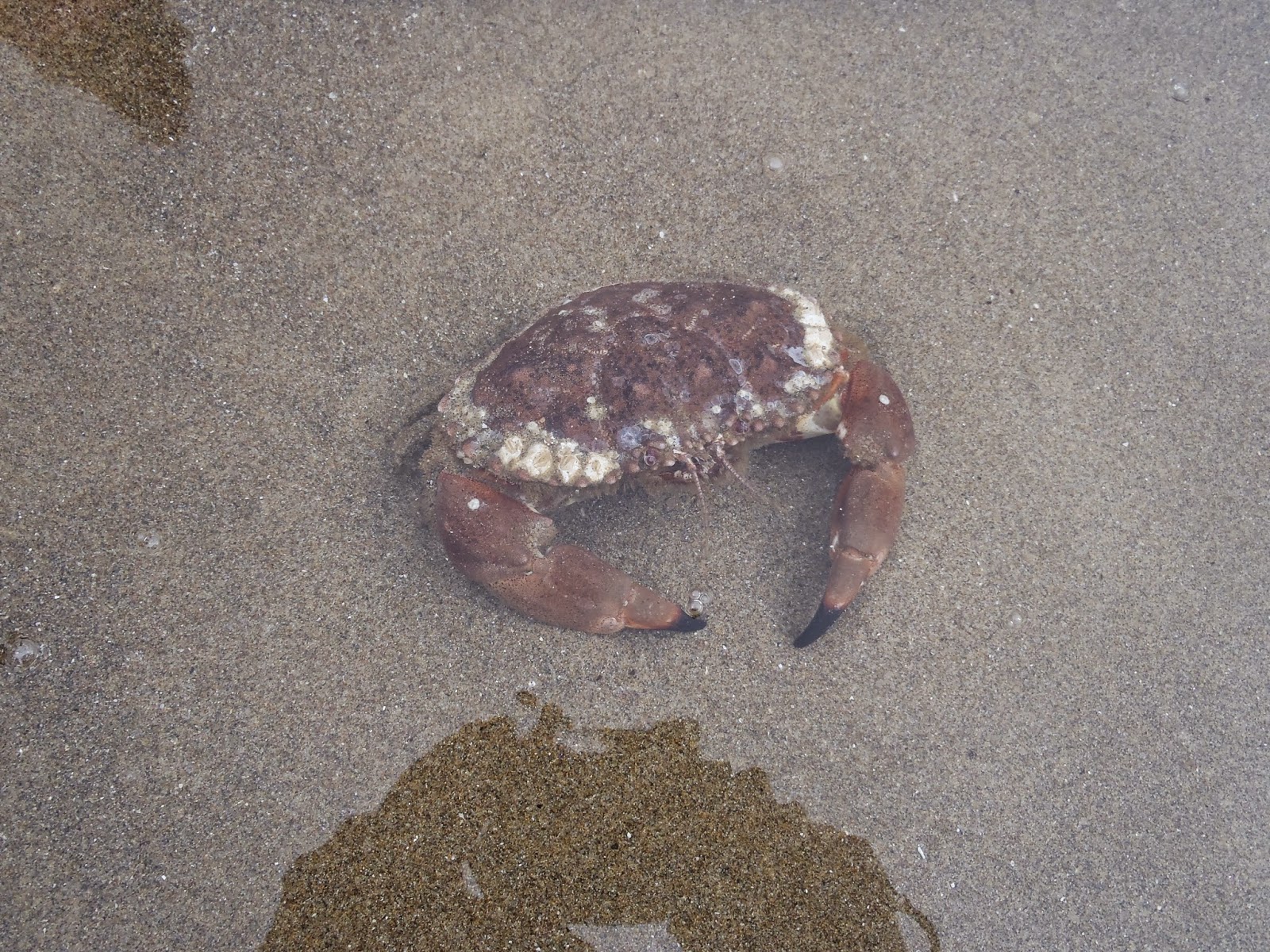A Gull's Life!
Haystack Rock had a healthy dose of rain and wind this past weekend - typical weather for this time of year and quite the change from the mild sunny days we have been enjoying the last two months! While that may have curtailed human visitation to the rock somewhat - and led to the cancelation of the Sunday HRAP shift - it didn't phase the creatures of the rock.
Western Gulls are probably the first species of bird you'll see when you step onto the beach. They are a stocky bird with a heavy bill. In their first year, they are predominately brown with a dark tail and bill. At full maturity, they have a white breast, gray wings with black tips, a white tail, and a predominately yellow bill.
The gull has a small claw halfway up the lower leg that enables them to sit and roost on high ledges without being blown off - which likely came in handy on Sunday that brought wind gusts up to 100 mph to the beach! Coastal birds, they can drink both fresh and salt water; salt is flushed from their system by a special pair of glands that are located above the eyes.
Monogamous, male and female gulls pair for life and share the responsibility of incubating their eggs and, once hatched, feeding and protecting their chicks. As the chicks get older, 'nursery flocks' of young gulls are formed where they play and learn skills that are vital for them to survive as adults. The nursery flock is watched over by a few adult male gulls and these flocks remain together until old enough to breed.
The gull is an opportunistic feeder; foraging, scavenging, and outright stealing food (especially from whales, other birds, and humans). Their food includes insects, fish, bird eggs, and crab. This week we spotted several resident gulls dining on crab!
The gull's meal was certainly a crab, and likely a Red Rock Crab (Cancer productus). This species of crab is brick red in color with black-tipped pincers. They inhabit gravel or rocky areas and the intertidal to about 260 feet in depth. They can be found from Alaska south to Baja California.
Creature Highlights
Birds
Western Gulls are probably the first species of bird you'll see when you step onto the beach. They are a stocky bird with a heavy bill. In their first year, they are predominately brown with a dark tail and bill. At full maturity, they have a white breast, gray wings with black tips, a white tail, and a predominately yellow bill.
The gull has a small claw halfway up the lower leg that enables them to sit and roost on high ledges without being blown off - which likely came in handy on Sunday that brought wind gusts up to 100 mph to the beach! Coastal birds, they can drink both fresh and salt water; salt is flushed from their system by a special pair of glands that are located above the eyes.
Monogamous, male and female gulls pair for life and share the responsibility of incubating their eggs and, once hatched, feeding and protecting their chicks. As the chicks get older, 'nursery flocks' of young gulls are formed where they play and learn skills that are vital for them to survive as adults. The nursery flock is watched over by a few adult male gulls and these flocks remain together until old enough to breed.
The gull is an opportunistic feeder; foraging, scavenging, and outright stealing food (especially from whales, other birds, and humans). Their food includes insects, fish, bird eggs, and crab. This week we spotted several resident gulls dining on crab!
The gull has the crab out of the water!
Now for a closer look!
Let the Feast Begin!
The gull's meal was certainly a crab, and likely a Red Rock Crab (Cancer productus). This species of crab is brick red in color with black-tipped pincers. They inhabit gravel or rocky areas and the intertidal to about 260 feet in depth. They can be found from Alaska south to Baja California.
Red Rock Crab
Creature Highlights
Birds
- Western Gull (Larus occidentalis)
- Harlequin Duck (Histrionicus histrionicus)
- Bald Eagle (Haliaeetus leucocephalus)
- Common Murre (Uria aalge)
- Black Oystercatcher ((Haematopus bachmani)
- Hairy Chiton (Mopalia ciliata)
- Red Rock Crab (Cancer productus)
- Dungeness Crab (Cancer magister)







Comments
Post a Comment